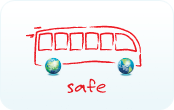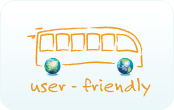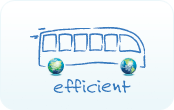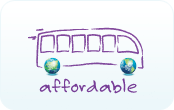|
// Connected mobility 2025
|
|
Personal mobility is key to the success and prosperity of a country's economy. But population growth, and therefore the increase in traffic in the world's largest megacities lead to paralysis.
This study on the socio-economic costs of traffic congestion in 30 of the world’s major cities highlights that the integration of various transport modes would have a positive impact in environmental terms, but also on the quality of life and would save USD 266 billion per year to the world’s 30 largest megacities.
With more than 1 billion smartphones in the world, the conditions to provide access to information in real time, anywhere, are already in place.
|
| // Real-time information to customers |
|
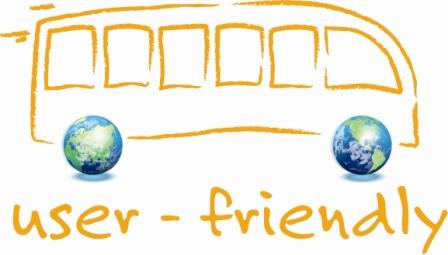 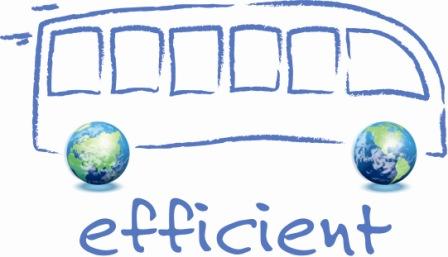 Real-time information available in terminals allows passengers to compare travel alternatives and to make the right transport choice in order to get to their destination in the most efficient way. Electronic displays, information screens and station announcements deliver this information. In case of delays, travel alternatives can be presented to passengers through these channels. Real-time information available in terminals allows passengers to compare travel alternatives and to make the right transport choice in order to get to their destination in the most efficient way. Electronic displays, information screens and station announcements deliver this information. In case of delays, travel alternatives can be presented to passengers through these channels.
Real-time information techniques have already been introduced in many cities throughout Europe, with an average passenger acceptance and appreciation level of 77%, i.e. in cities, such as Rome, Graz, Rotterdam and Berlin.
Example: Graz provides of a real-time online presentation of the current traffic situation. Data from automatic traffic counters, taxis and traffic control optimisers are combined through a new model for data exploitation, which links data from various sources with each other. This collection of data provides essential information for operators and allows better short-term planning and ensures that faster action, including remedial action, can be taken.
|
|
For more information:
Sustainable Urban Transport, Final report from the European project Trendsetter, pp. 26-28
Traffic management, Workshop Graz, Trendsetter
Mobitrans, l’information sur les bus et trams de Nantes en temps réel sur son mobile
Transports Publics Genevois (TPG)
|
|
// Information about the coach terminal itself and services offered on-site
|
|
 Information about the coach terminal itself and services offered on-site have to be made available for current and potential users. Services that nobody knows exist or that nobody knows how to use are worthless. That is why, information platforms of various types are necessary in order to increase the awareness of the existence of transport and other services amongst potential and already existing coach terminal users. Information about the coach terminal itself and services offered on-site have to be made available for current and potential users. Services that nobody knows exist or that nobody knows how to use are worthless. That is why, information platforms of various types are necessary in order to increase the awareness of the existence of transport and other services amongst potential and already existing coach terminal users.
Through the publication of coach terminal plans, websites, information counters and stands, people would be informed about the possibilities for reserving travel tickets, general information on availability of services, coach routes, destinations, potential alternative solutions, schedules, duration of travel, travel costs and possible reductions.
Furthermore, information on various options of payment and cost compensation in case of travel cancellation should be provided. This should be followed by information about other services, such as luggage storage, the use of waiting lounges and rest rooms, physical assistance for people with reduced mobility. Information on passenger rights and obligations should also be made available for coach terminal users.
Example: LCD passenger information displays at Stockholm City terminalen inform passengers about delays, departure and arrival platforms and facilities and services available in the terminal. All departing and arriving buses report to the Cityterminalen traffic control. Traffic control makes sure that the departing buses and gate numbers are correct, and that the correct information is displayed in the terminal. By keeping close contact with bus carriers and drivers, traffic control can ensure seamless and safe bus traffic at the terminal.
|
|
// Online planning
|
|
  Online planning tools help passengers make the smart choice for their mode of transport. Itineraries, best connections and other alternatives can be checked on the web. Delays and the current traffic situation can be seen as well and included in the decision-making process of the mode of transport. Online planning tools help passengers make the smart choice for their mode of transport. Itineraries, best connections and other alternatives can be checked on the web. Delays and the current traffic situation can be seen as well and included in the decision-making process of the mode of transport.
Example: Graz and Stockholm have both developed websites to offer such services to their customers. In Graz, approximately 20% of customers of the Mobility Centre have changed their mobility behaviour in favour of collective/public transport. As a result, the Graz’s BusBahnBim website has contributed significantly to the increase in the number of people travelling by collective/public transport.
|
|
For more information:
BusBahnBim-Auskunft, Graz AG Verkehrsbetriebe
Sustainable Urban Transport, Final report from the European project Trendsetter, p.24
Transports Publics Genevois (TPG)
|
|
// Online travel planners for combined public transport modes
|
|
  Online travel planning portals for combined public transport modes should be reproduced worldwide as a key mobility enabler. Integrated public transport portals allow users to plan their journeys using information from all transport operators including, urban and intercity buses, metro, tram, rail, boats, ferries, hanging bridges and even elevators. Online travel planning portals for combined public transport modes should be reproduced worldwide as a key mobility enabler. Integrated public transport portals allow users to plan their journeys using information from all transport operators including, urban and intercity buses, metro, tram, rail, boats, ferries, hanging bridges and even elevators.
Example: The Basque autonomous regional government and i2MApp, an Intelligent Transport Systems (ITS) provider, have jointly produced an integrated public transport portal including 34 urban and intercity transport operators from all modes. i2MApp is working on a similar online travel planner with officials in Chile that brings together 29 transport operators and would help Chilean passengers optimise their use of public transport.
|
|
For more information: Basque region's integrated public transport portal
|
|
|
